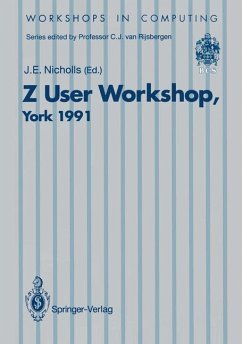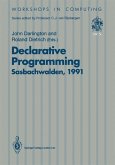In ordinary mathematics, an equation can be written down which is syntactically correct, but for which no solution exists. For example, consider the equation x = x + 1 defined over the real numbers; there is no value of x which satisfies it. Similarly it is possible to specify objects using the formal specification language Z [3,4], which can not possibly exist. Such specifications are called inconsistent and can arise in a number of ways. Example 1 The following Z specification of a functionf, from integers to integers "f x : ~ 1 x ~ O· fx = x + 1 (i) "f x : ~ 1 x ~ O· fx = x + 2 (ii) is inconsistent, because axiom (i) gives f 0 = 1, while axiom (ii) gives f 0 = 2. This contradicts the fact that f was declared as a function, that is, f must have a unique result when applied to an argument. Hence no suchfexists. Furthermore, iff 0 = 1 andfO = 2 then 1 = 2 can be deduced! From 1 = 2 anything can be deduced, thus showing the danger of an inconsistent specification. Note that all examples and proofs start with the word Example or Proof and end with the symbol.1.








